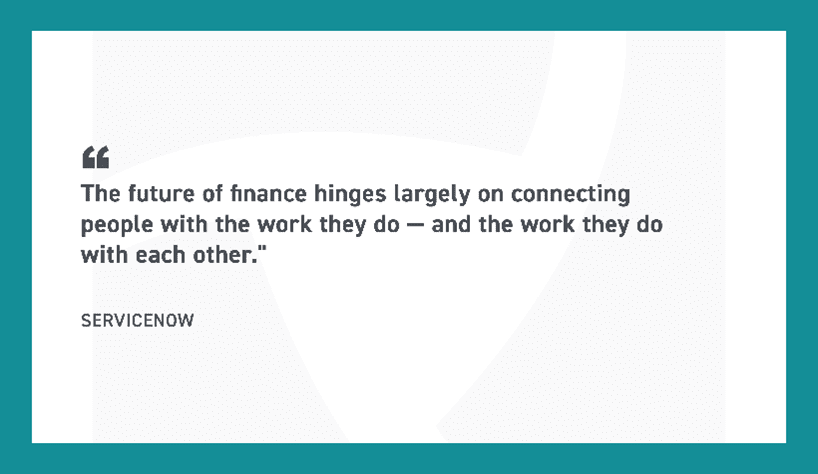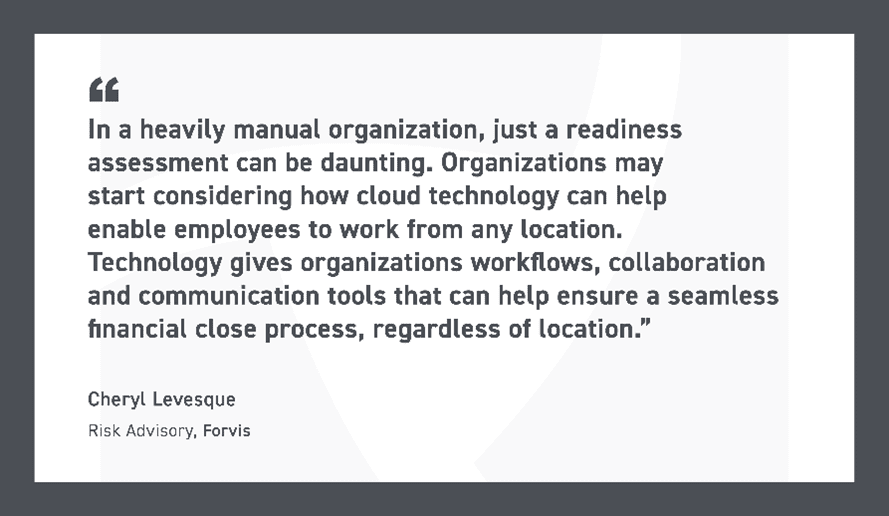Integrating the Office of Finance to Build a Collaborative Ecosystem
Blog post
Share
Modernizing your month-end close will save your F&A team valuable time while reducing risk and improving the overall accuracy and confidence in your reporting. This blog series looks at “5 Best Practices” to help you get started on that journey. So far, we have covered the following areas:
- Best Practice 1: Align Your People, Process, Policy, and Technology
- Best Practice 2: Implement a Risk-Based Approach
- Best Practice 3: Standardize Processes across Entities and Geographies
- Best Practice 4: Optimize with Advanced Automation
Once you have optimized your month-end close processes and applied advanced automation, you can start integrating into other technology solutions to build a collaborative ecosystem.
Financial transformation is no longer an aspirational goal but instead is a requirement to build resilience and effectively connect with the wider organization like never before. The Office of Finance is increasingly proving to do far more than number crunching and are turning into strategic leaders for their organizations.
“Now more than ever, it’s vital for finance functions to present themselves as profit generators rather than cost-saving centers. The demands of today’s business climate are forcing us to do more with less. Even the most crucial cost-oriented operational teams are now asked to deliver greater value toward the organization’s bottom line. Automating time-consuming, manual tasks means freeing up accounting staff to focus on more strategic work.”- The Institute of Financial Accountants. “What does the future of accounting look like?” Accountancy Age, Aug. 2022.
Let’s take a look at how F&A teams can foster that strategic business partner role more and make the most of new solutions to improve the collaborative ecosystem across their organization.
Four Steps to a Collaborative Ecosystem
Construct a Single Source of Truth
Communicating effectively about financial processes, progress, and insights can be challenging if you aren’t confident that the entire team is on the same page. In fact, it’s nearly impossible when people work from disparate spreadsheets, paper invoices, and receipts.
By digitizing and combining all facets of financial processes and documentation, teams can be sure they have a single source of the truth on which to base their work and communication.
Not only will digitizing processes help finance teams communicate effectively; but it will also save time in planning, reporting, and empower finance teams to offer strategic business advice that is expected today.
Foster Ongoing Collaboration
Email and stand-up meetings are traditionally how most co-workers communicate. But with the average office worker spending around three hours a day reading and responding to emails, it isn’t the most efficient method during busy periods like month-end close and tax season.

By developing and maintaining a close partnership between finance and IT functions, organizations can successfully enable the implementation of new technology for all users involved. Having an ongoing conversation between multiple departments ensures that there is continued communication and growing relationships between teams.

Today business leaders expect information faster that ever before. For that reason organizations should consider investing in cloud technology to create a collaborative ecosystem, particularly those with staff spread across different locations and time zones. Financial automation solutions that centralize task lists, controls, and automatically document the progress of each item on the project’s to-do list are now available to significantly streamline the entire reconciliation and close process. Automatic notifications and alerts keep everyone on task, making project communication more straightforward.
Build Out a Plan
Knowing what you want to do and when you want to do it is the foundation of a well-structured collaborative ecosystem. Before any substantial task starts, take time to develop a clear and coherent plan to walk the team through.

Defining internal controls for corporate governance is essential to ensure the organization can complete tasks efficiently, accurately, and in an orderly manner. Providing a clear audit trail is also vital. Risks should be identified, analyzed, and rated based on the organization’s risk assessment protocol. This organizational collaborative ecosystem becomes even more critical when new employees join the team, as every business has its own way of completing its accounting, and you can minimize any barriers in the process.
Empower Skilled Collaborators
In a McKinsey study, finance’s potential for inefficiency based on a lack of automation was rated one of the highest areas for potential company disruption. The study indicates “manual operations” are a big roadblock for the Office of Finance’s role in the greater digital transformation lens, even with a healthy financial transformation initiative in progress.
For CFOs, the need to improve efficiencies across all financial processes has long been acknowledged. In the world of finance, even a minor miscommunication can lead to major mistakes and because the Office of Finance plays a critical role in an enterprise’s success, they require the same level of connection as other departments such as IT, Human Resources, Legal, and Procurement.

It’s also worth investing in additional training to get existing F&A employees up to standard. There is an abundance of professional qualifications and certificates available through bodies like the American Institute of Certified Public Accountants, including communications and report writing modules. You could also consider asking a powerful communicator within the team to develop and run a tailored session based on your business’s specific processes and culture.
Is your organization taking the necessary steps to create a collaborative ecosystem?
Very rarely is there a process that occurs entirely within the jurisdiction of one team. When it comes to workflows for the Office of Finance, finance and accounting teams need the ability to leverage workflows based on triggers and events in the period-end close – strengthening financial controls across the organization. Navigating away from manual-heavy processes also empowers F&A teams to provide strategic analysis and critical business insights with leaders across the organization rather than dedicating their hours to reconciling and matching accounts.
To learn more about how you can modernize your month-end close, read the complete blog series or download the Best Practice eBook below.
[cta-content-placement]
Blog Series – 5 Best Practices to Modernizing Your Month-End Close
- Best Practice 1: Align Your People, Process, Policy, and Technology
- Best Practice 2: Implement a Risk-Based Approach
- Best Practice 3: Standardize Processes across Entities and Geographies
- Best Practice 4: Optimize with Advanced Automation
Written by: Lauren McCrohan

